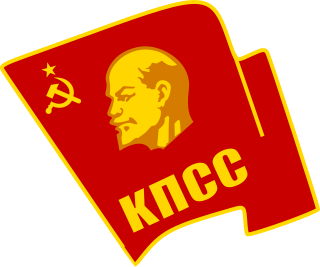
The Communist Party of the Soviet Union (CPSU), at some points known as the Russian Communist Party, All-Union Communist Party and Bolshevik Party, and sometimes referred to as the Soviet Communist Party (SCP), was the founding and ruling political party of the Soviet Union. The CPSU was the sole governing party of the Soviet Union until 1990 when the Congress of People's Deputies modified Article 6 of the 1977 Soviet Constitution, which had previously granted the CPSU a monopoly over the political system. The party's main ideology was Marxism–Leninism. The party was outlawed under Russian President Boris Yeltsin's decree on 6 November 1991, citing the 1991 Soviet coup attempt as a reason.
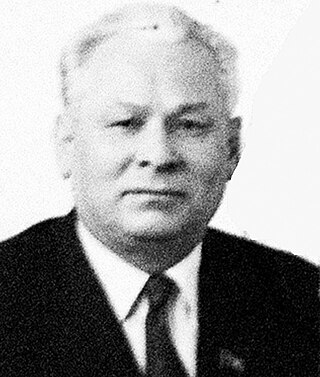
Konstantin Ustinovich Chernenko was a Soviet politician and the seventh General Secretary of the Communist Party of the Soviet Union. He briefly led the Soviet Union from 1984 until his death a year later.
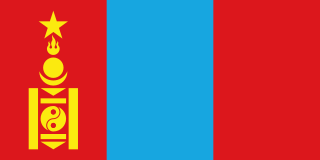
The Mongolian People's Republic (MPR) was a socialist state that existed from 1924 to 1992, located in the historical region of Outer Mongolia. Its independence was officially recognized by the Nationalist government of China in 1946. Until 1990, it was a one-party state ruled by the Mongolian People's Revolutionary Party, and maintained close political and economic ties with the Soviet Union, as part of the Eastern Bloc.

Lazar Moiseyevich Kaganovich was a Soviet politician and one of Joseph Stalin's closest associates.

An index of articles related to the former nation known as the Soviet Union. It covers the Soviet revolutionary period until the dissolution of the Soviet Union. This list includes topics, events, persons and other items of national significance within the Soviet Union. It does not include places within the Soviet Union, unless the place is associated with an event of national significance. This index also does not contain items related to Soviet Military History.

The Academy of Sciences of the Soviet Union was the highest scientific institution of the Soviet Union from 1925 to 1991. It united the country's leading scientists and was subordinated directly to the Council of Ministers of the Soviet Union.

Andrey Andreyevich Andreyev was a Soviet Communist politician. An Old Bolshevik who rose to power during the rule of Joseph Stalin, joining the Politburo as a candidate member in 1926 and as a full member in 1932, Andreyev also headed the powerful Central Control Commission of the Communist Party of the Soviet Union from 1930 to 1931, and then again from 1939 until 1952.
The People's Commissariat of the Workers' and Peasants' Inspection, also known as Rabkrin, was a governmental establishment in the Soviet Union of ministerial level that was responsible for scrutinizing the state, local and enterprise administrations.
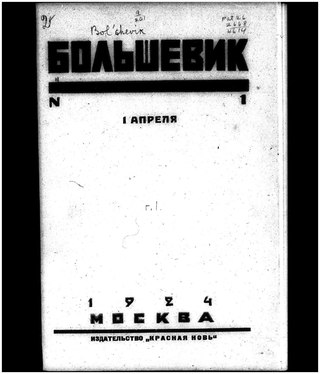
Kommunist, named Bolshevik (Большевик) until 1952, was a Soviet journal. The journal was started in 1924. The founders were Nikolai Bukharin, Georgy Pyatakov, and Yevgenia Bosch. It was the official theoretical and political organ of the Central Committee of the Communist Party of the Soviet Union.
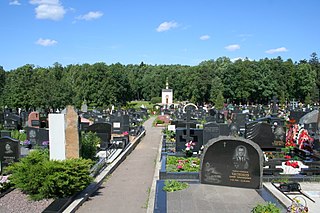
The Troyekurovo Cemetery, alternatively known as Novo-Kuntsevo Cemetery, is a cemetery in Moscow, Russia.

Heinz Hoffmann was a German military officer and politician who served as the Minister of National Defense in the Council of Ministers of the German Democratic Republic, and as a member of the Politburo of the Central Committee of the Socialist Unity Party (SED).
This is a list of all deputy premiers of the Soviet Union.
The following lists events that happened during 1991 in the Soviet Union and Russia.

Mykhailo Oleksiyovych Burmystenko was a Soviet politician who served as the chairman of the Supreme Soviet of the Ukrainian SSR from 1938 to 1941. Burmystenko died during the Battle of Kiev in 1941 and a memorial remains there in his memory.
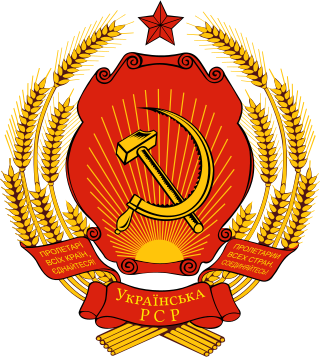
The First Secretary of the Central Committee of the Communist Party of Ukraine was a party leader of the republican branch of the Communist Party of the Soviet Union. The office's name alternated throughout its history between First Secretary and the General Secretary.
The DerzhPlan of the Ukrainian SSR or State Planning Committee of the Ukrainian SSR was a union-republican authority that conducted state planning of economical and social development of the Ukrainian SSR and controlled execution of national economical plans.

The Central Committee of the Communist Party of the Soviet Union was the highest organ of the Communist Party of the Soviet Union between two congresses. According to party statutes, the committee directed all party and governmental activities. The Party Congress elected its members.
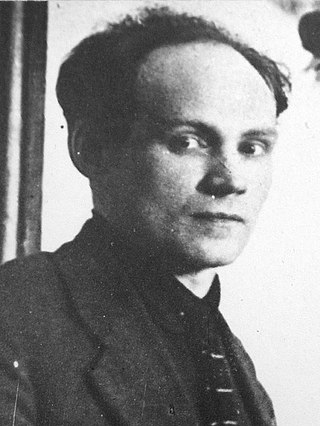
Nikolai Kirillovich Antipov was a Soviet politician. He was appointed Member of the Central Executive Committee of the Soviet Union and elected member of the Central Committee of the Communist Party of the Soviet Union (1924–1937) and candidate member of the Orgburo. He was executed during the Great Purge and rehabilitated posthumously.
The following lists events that happened during 1990 in the Union of Soviet Socialist Republics.













